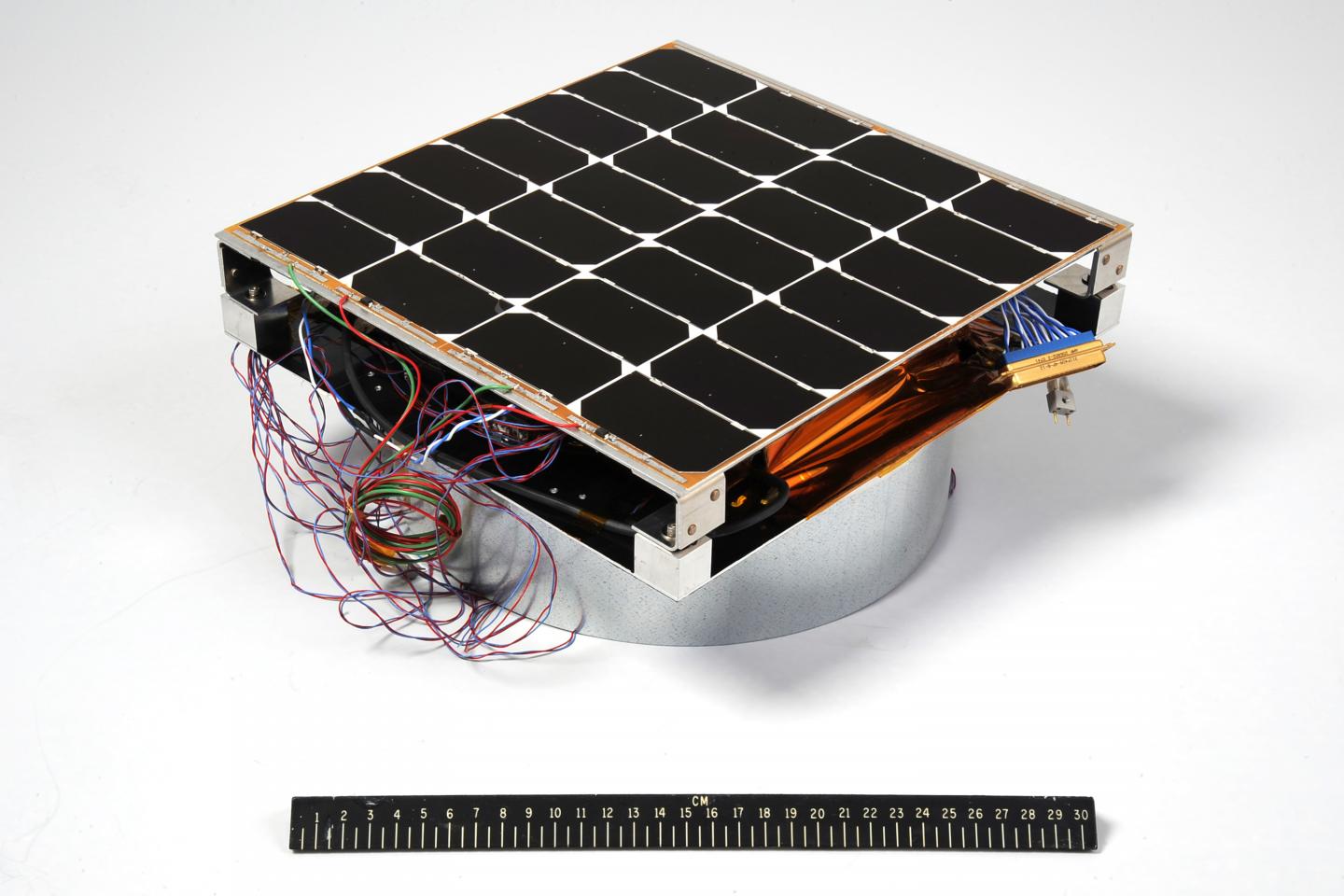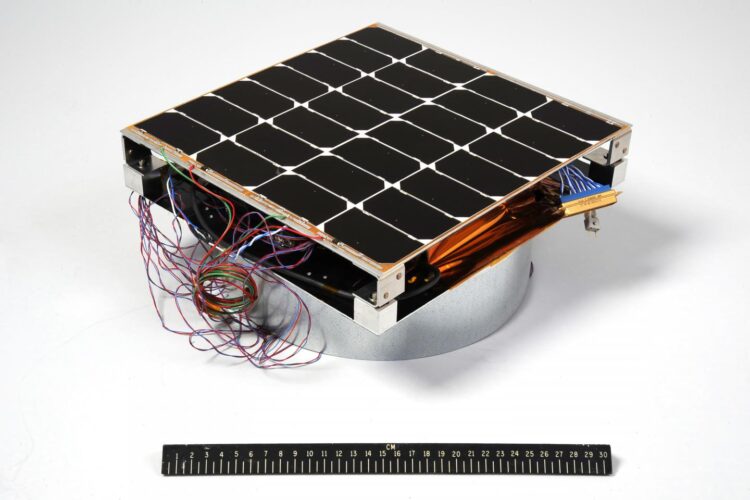
Credit: Image Courtesy of U.S. Naval Research Laboratory
WASHINGTON — U.S. Naval Research Laboratory engineers launched PRAM, the Photovoltaic Radio-frequency Antenna Module, aboard an Air Force X-37B Orbital Test Vehicle on May 17 as part of a comprehensive investigation into prospective terrestrial use of solar energy captured in space.
“To our knowledge, this experiment is the first test in orbit of hardware designed specifically for solar power satellites, which could play a revolutionary role in our energy future,” said Paul Jaffe, PRAM principal investigator.
The 12-inch square tile module will test the ability to harvest power from its solar panel and transform the energy to a radio frequency microwave.
“PRAM converts sunlight for microwave power transmission. We could’ve also converted for optical power transmission,” said Chris Depuma, PRAM program manager. “Converting to optical might make more sense for lunar applications because there’s no atmosphere on the Moon. The disadvantage of optical is you could lose a lot of energy through clouds and atmosphere. “
The use of solar energy to operate satellites began at the start of the space age with another NRL spacecraft: Vanguard I, the first satellite to have solar cells. This current experiment focuses on the energy conversion process and resulting thermal performance. The hardware will provide researchers with temperature data, along with PRAM’s efficiency in energy production. This information will drive the design of future space solar prototypes.
Depending on the results, the team aims ultimately to build a fully-functional system on a dedicated spacecraft to test the transmission of energy back to Earth. The development of a space solar capability could potentially help provide energy to remote installations like forward operating bases and disaster response areas.
This flight experiment enables researchers to test the hardware in actual space conditions. Incoming sunlight travels through the Earth’s atmosphere, both filtering the spectrum and reducing its brightness. A space solar system traveling above the atmosphere would catch more energy from each of the sunlight’s color bands.
“There’s more blue in the spectrum in space, allowing you to add another layer to solar cells to take advantage of that,” Jaffe said. “This is one reason why the power per unit area of a solar panel in space is greater than on the ground.”
The National Security Space Office recommended in a 2007 feasibility study to investigate solar power satellite technology. NRL’s expertise with solar-powered satellites since the late 1950s and long history as a pioneer in space, including in the development of GPS, led researchers to further explore this emergent field.
###
Contributing and supporting partners for this effort included the Operational Energy Capability Improvement Fund in the Office of the Under Secretary of Defense for Research and Engineering, the U.S. Naval Research Laboratory, the Department of the Air Force Rapid Capabilities Office, the Department of Defense Space Test Program, Boeing, TSC Praxis Operations, Gulfview Research, Odin Engineering, and SpaceQuest.
About the U.S. Naval Research Laboratory
NRL is a scientific and engineering command dedicated to research that drives innovative advances for the Navy and Marine Corps from the seafloor to space and in the information domain. NRL headquarters is located in Washington, D.C., with major field sites in Stennis Space Center, Mississippi, Key West, Florida, and Monterey, California, and employs approximately 2,500 civilian scientists, engineers and support personnel.
Media Contact
Victor Chen
[email protected]
Original Source
https:/





